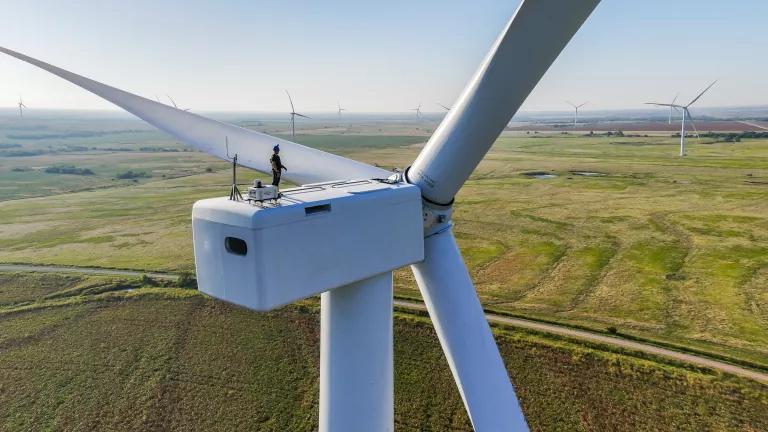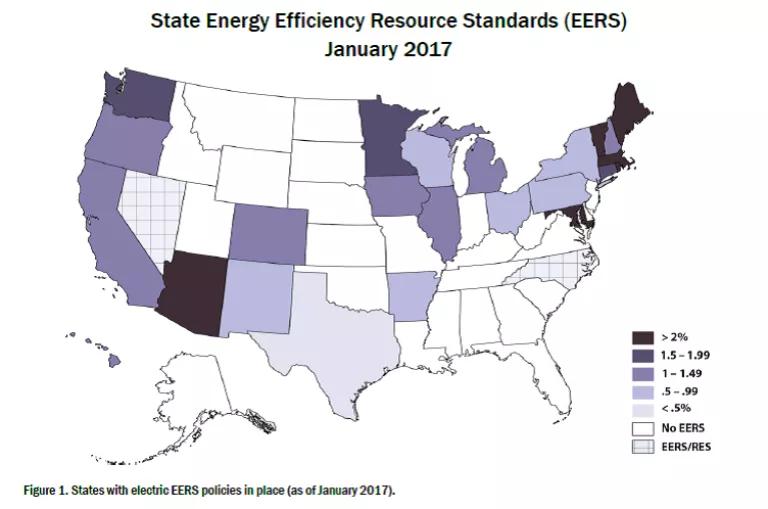U.S. Clean Energy Jobs Surpass Fossil Fuel Employment
The recently published Department of Energy 2017 U.S. Energy and Employment Report shows that clean electricity jobs are no doubt the engine that drives America’s electric energy economy, outstripping the number of paychecks provided by the fossil fuel industry by at least five to one.

Josh Bauer and Bryan Bechtold/NREL, 84130
The recently published Department of Energy 2017 U.S. Energy and Employment Report shows that clean electricity jobs are no doubt the engine that drives America’s electric energy economy, outstripping the number of paychecks provided by the fossil fuel industry by at least five to one. While that doesn’t mean fossil fuel generation is gone, it certainly means that if you are a politician looking for ways to grow jobs for the long term in your community, clean energy is the path to take.
Check Out the Numbers
All told, nearly 1 million Americans are working near- or full-time in the energy efficiency, solar, wind, and alternative vehicles sectors. This is almost five times the current employment in the fossil fuel electric industry, which includes coal, gas, and oil workers.
And if you add in those who only work part-time, such as a construction worker who doesn’t spend all his or her work hours installing energy efficient components like high-efficiency windows, the number jumps to nearly three million Americans working in part or in whole for the energy efficiency, solar, and wind sectors. That’s 14 times the current employment in the fossil fuel electric industry.
Here are some more impressive statistics from the report:
- More than 350,000 people last year worked in part or in whole on solar energy production (with over 260,000 of those employees spending the majority of their time on solar). This is more than 40 percent of the overall electrical generation workforce and exceeds the combined employment of coal, gas, and oil workers connected with producing electricity that reached just under 200,000.
- 2.2 million American jobs contribute in some manner to energy efficient products and services. Nearly 1.5 million of these jobs are in the construction industry involved in making our homes and businesses more energy efficient, and almost 300,000 are manufacturing jobs, producing ENERGY STAR-certified products and efficient building materials in the United States.
- The number of wind energy employees reached more than 100,000 across the nation, twice the number recorded in 2013 by the American Wind Energy Association. See my colleague’s blog for more good news about U.S. wind power jobs and manufacturing.
- At least 700,000 jobs in the motor vehicle sector are focused on increasing fuel economy or transitioning to alternative fuels. There are also more than 250,000 employees spending the majority of their time working with alternative fuels vehicles, including natural gas, hybrids, plug-in hybrids, all electric, and fuel cell/hydrogen vehicles.
- These clean energy jobs can be found in every single state. See here for a state-by-state breakdown.
The job growth trends also favored clean energy in 2016: Wind employment went up by 32 percent over the previous year and the solar workforce increased by 25 percent. Efficiency alone increased 7 percent (12 percent in the construction industry), which represents relatively large numbers given the size of the efficiency workforce. Jobs in alternative fuels vehicles also saw an increase of almost 70,000 jobs in 2016.
Looking forward, energy efficiency employers project the highest growth rate over the next 12 months (about 9 percent) while the fuels sector reported it expects a decline in employment of about 3 percent over the same time period.
In addition, a new analysis by the nonpartisan groups Environmental Entrepreneurs (E2) and E4TheFuture shows similar positive results for 2015, and the Environmental Defense Fund recently issued a report finding more than 4 million sustainability jobs in the United States, up from 3.4 million in 2011. It points out that those jobs are local (such as weatherizing homes), cannot be sent offshore, and have average wages above the national median.
What Does This Mean for the American People?
A key takeaway is that if the Trump administration hopes to fulfill its promise to Americans to create good-paying local jobs, it needs to look no further than the rapidly developing clean energy arenas. As my colleague wrote, a key factor in creating clean energy jobs is state policy that encourages development in those sectors. As shown by the American Council for an Energy Efficient Economy, states like California, Massachusetts, New York, and Pennsylvania all have energy efficiency policies that support a strong and growing efficiency workforce.

These policies can also keep energy bills low despite claims that investing in clean energy automatically leads to higher costs. But it’s not just good news for energy efficiency - a recent NRDC report shows that clean energy actually costs less than the dirty alternative.
What’s Next?
Without federal leadership, states must push for strong efficiency and renewable energy policies within their borders to experience these benefits and support their growing clean energy workforces. We also need to make sure that opportunities are available and easily accessible for underserved communities and workers transitioning out of polluting energy occupations.
Unfortunately, President Trump has ignored the entire burgeoning clean energy movement in his new so-called “America First” energy plan and is threatening to clamp down on the very agencies—the U.S Environmental Protection Agency and the Department of Energy—that augment this progress.
We urge the president and his administration to look at the real facts about the clean energy transition that’s irrevocably underway. The country should increase investment in these growing sectors not only to ensure healthy air to breathe and safe water to drink, but also to give every American an opportunity to have a good job that supports our transition to a clean (and profitable) energy economy.




